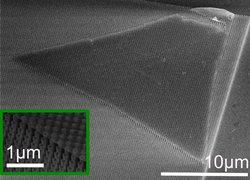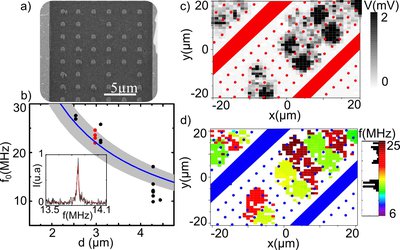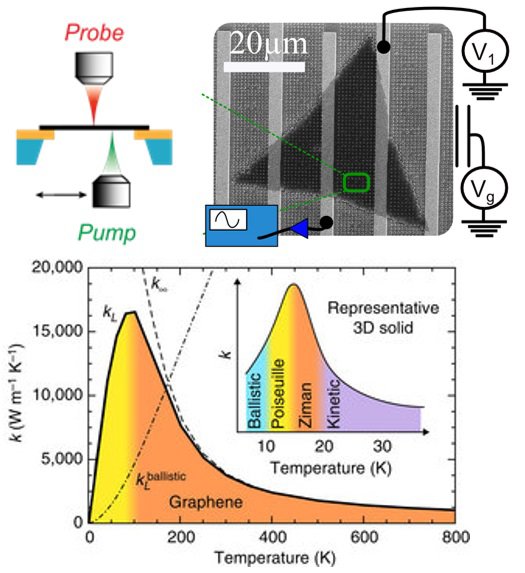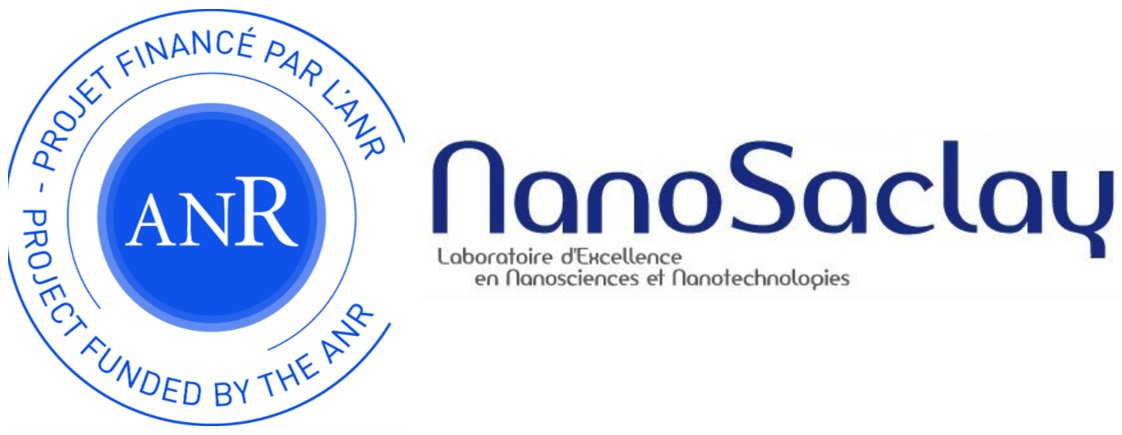

Figure: Monolayer of MoS2 fully suspended over SiO2 pillars with optomechnaical measurements of resonants frequencies in function of the drums dimensions
Nanomechanical systems have been at the heart of recent physic discoveries of importance, as detection of cosmic gravitational waves. A high potential lies in the atomically thin layer of transition metal dichalcogenides (TMDs) for nanomechanic as MoS2. In principle, suspending such monolayer TMDs should form remarkable opto-mechanical resonators which forms a rich platform for condensed matter problems like electronic, optic and crystalline phase transition. There polymorphisms provide a route for investigating phase transitions with the extreme sensitivity of optomechanic with TMDs to external force and adsorbed masses.
Our activities focus on a new sample type with large suspended monolayer MoS2 with electrical contacts. This type of hybrid structure of opto-electro-mechanic (NOEMS) couples at the same time the nanomechanics with interesting properties of the large 2D materials.


Figure: 2D systems and graphene show new interactions regime of phonons transport (IMPMC)
The study of thermal transport is a major challenge with many fundamental and technological implications. In this context, the rise of low dimension materials opens up a new scale which deeply changes our understanding. The well-established models for conventional bulk crystals fail for one-atom-thick structures and innovative experimental and theoretical approaches are needed. Surprisingly, a huge effort has allowed addressing graphene Dirac electron transport whereas 2D thermal transport is still in its infancy. This intership proposal intends to engineer suspended membranes of 2D materials, as MoS2 to explore the new frontiers of thermal transport.
The approach combines specific and complementary state-of-the art-expertise in i) the fabrication of complex nano-patterned structures1,3; ii) spatially resolved temperature measurements using Raman spectroscopy; iii) development of original theoretical models in collaboration with theoricians 2
(1) Chaste, J.; et al. ACS Nano 2018, 12 (4), 3235–3242.
(2) Cepellotti, A.; et al. Nat. Commun. 2015, 6, 6400.
(3) Chaste, J.; et al. ACS Nano 2020, accepted.